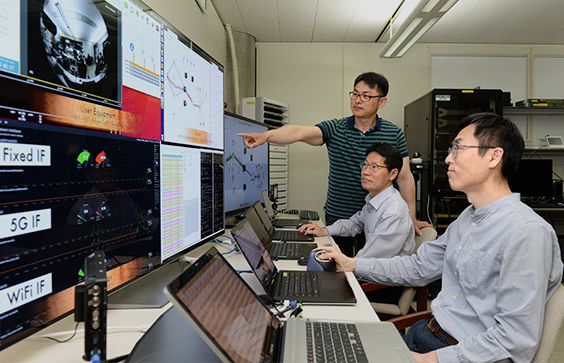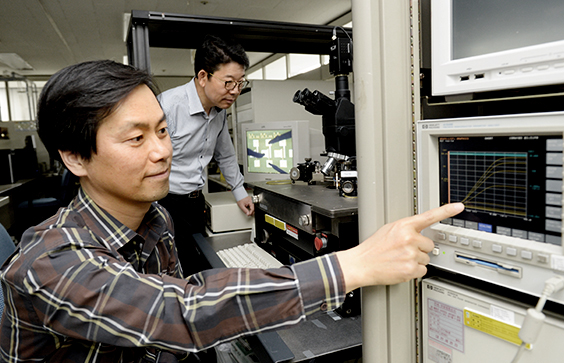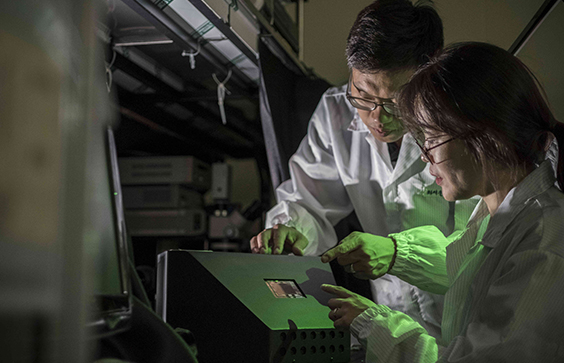VOL.53
June 2019


News ____ ETRI Issue
Headline News

ETRI Develops 5G-Wi-Fi-Wired Internet Integration Technology
Through joint research with KT and domestic SMEs, including Lanbird Technology and SNETICT, ETRI announced the development of original technology capable of providing up to 40-Gbps large-scale internet services by integrating 5G, Wi-Fi, and the wired internet network. The developed technology is multi-access traffic integration technology that brings together the three networks. Using the technology, wireless and wired access environments that differ from each other can be controlled in a single 5G core network, so that the traffic capacity becomes 40 times larger than that of 4G.
If 5G, Wi-Fi and the wired internet network technology are used in parallel, and the transmission speed can theoretically be as high as 40Gbps, i.e., with 20Gbps of 5G, which is up to 20 times faster than LTE, 10Gbps of the next-generation Wi-Fi, and 10Gbps of the wired internet network all put together. Here, the concerned access network can be promptly controlled in response to a given situation so that an optimal access environment is ensured.

ETRI Develops Gallium Oxide Chips that Endure 2300V
ETRI announced that it developed, for the first time in the world, a Gallium Oxide-based power semiconductor transistor that can endure high voltages up to 2300V. It is also known as MOSFET.
The technology is expected to serve as a “powerful” semiconductor highly resistant to high voltages and power while being applied to the power conversion modules that are widely used in various applications requiring high voltages, such as electronic appliances, electric cars, wind power plants, and locomotive engines.

ETRI Develops 250 times more Vivid Hologram
Compared to 8K
ETRI announced the development of new pixel structure technology that can significantly decrease the pixel size and spacing to a few micrometers, thereby implementing a viewing angle of 30° and greatly increasing the definition. With this advancement, it will be possible to develop a panel with a resolution of up to 72K using 1-μm pixel pitch devices, the smallest in the world.
The researchers were awarded the “Best Paper Award” for this achievement at Display Week 2019, the world’s largest display conference, held in San Jose, US, last week.



